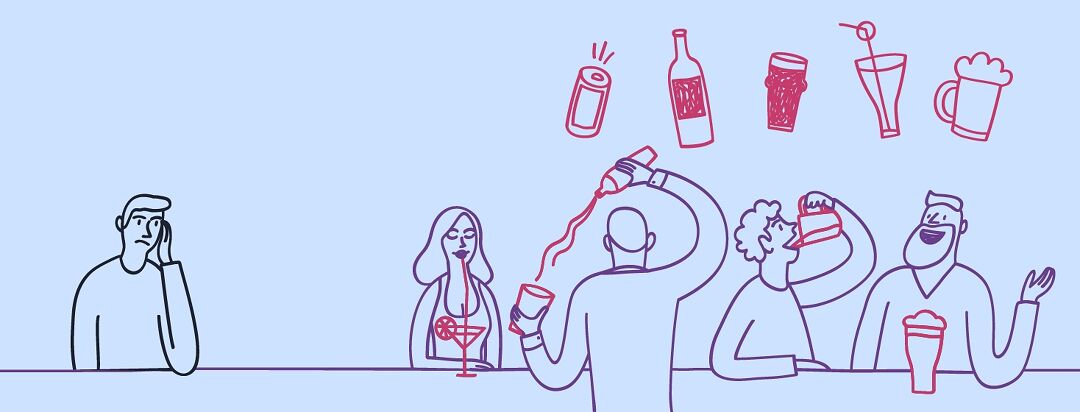Managing Alcohol Intake with Type 2 Diabetes: 5 Key Tips
It could be hard to imagine a good get-together without a drink or two. Alcohol is a common part of many social events, from weddings to birthdays to an afternoon barbecue. More than 80 percent of people over age 18 reported having drinks in the past year.1
Despite alcohol consumption being common, navigating the world of alcohol and type 2 diabetes (T2D) management can be intimidating for a lot of people. Let's tackle it together!
1. Say no to binge drinking
For men, binge drinking is drinking 5 or more drinks at one time. For women, it is drinking 4 or more drinks at one time. Outside of type 2 diabetes, binge drinking is a health concern.2
Binge drinking increases the risk of chronic diseases and injuries. Also, the connection between overuse of alcohol and liver disease is strong.2
Liver disease is a concern when considering diabetes because there are connections between liver disease and type 2 diabetes. The combination of both binge drinking and T2D means the risk for liver disease is much higher. Also, binge drinking can lead to high or low blood glucose levels and make it difficult for you or others to recognize the signs and symptoms of blood sugar highs or lows.2
2. Say yes to food
Certain medications for diabetes can cause low blood sugar. When combined with alcoholic beverages that have no carbohydrates (for example, vodka, rum, and tequila), they can cause low blood sugars that are hard to recognize and recover from.
A good rule of thumb is to have some carbohydrates with your drink if you take these medications and prefer these kinds of drinks. Note that it's also important not to binge drink on these medications and monitor blood glucose more often when drinking while on these diabetes medications.3
3. Monitor blood sugar when drinking alcohol
Alcohol can contribute to both high and low blood glucose levels. Its impact on your body will depend on the type of alcohol, the amount you consume, and what you're having with it.
It's essential to increase your blood glucose monitoring when drinking, particularly if you're having more than the minimum amount of 1 drink per day for women or 2 drinks per day for men, or if you're drinking over a long period (golfing, fishing, game night, etc).4
4. Use the buddy system
Unfortunately, alcohol-related deaths do happen. In my career as a Certified Diabetes Care and Education Specialist (CDCES), I've heard more than one horror story about someone with diabetes dying due to extremely low blood glucose while drinking.
Signs of low blood glucose, like unsteadiness, slurred speech, confusion, and mood swings, can easily mimic the signs of being drunk. If no one around you knows you have diabetes, they may mistake your low glucose for intoxication. The end result is you don't get the help you need when you need it.
Identify someone in your group as your buddy. Tell your buddy what signs to look for and what they can do to help. Ideally, this would be someone who stays sober, such as your designated driver. Also, consider wearing a medical alert bracelet.
5. Be aware of alcohol's carbohydrate content
Drinks can vary widely by alcohol content and impact on blood sugar. In general, liquors like rum, vodka, tequila, and whiskey have little to no carbohydrates. Light beers, seltzers, and even zero-sugar beverages can provide several low-carbohydrate options.
It's still necessary to check the total carbohydrate content in your zero-sugar drinks because some still have carbs. Even regular beers are only about 1 serving of carbohydrates (15 grams). Wines vary in carbohydrate content. Dry wines tend to be lower in carbohydrates, while sweet wines are higher. Mixed drinks can also vary. Things like margaritas and daiquiris can be pretty high in carbohydrates, while mojitos or mules are lower.
You have options when it comes to alcohol
Low- or alcohol-free cocktails and drinks have recently become more common at bars and restaurants. These can also be a good alternative, but be mindful of carbohydrate content.
There is no shortage of options to enjoy, even with type 2 diabetes. Check with your provider about more ways you can balance diabetes management with alcohol safely.

Join the conversation